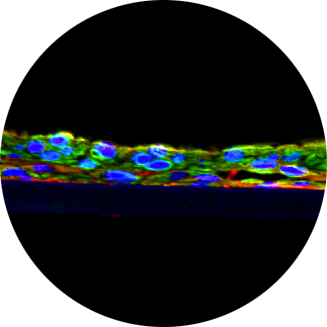Kinetic conversion of BIOGF1K enriched in compound K from in vitro 3-D human tissue model
- TR Number: 1027
- Authors: Woo-Hyun Kim, Won-Jo Choi, Jeong-Eun Kim, Joonho Choi, Yong-Deok Hong, Jin Nam, Won-Seok Park, Soon-Mi Shim
- Materials Tested: ginsenosides, BIOGF1K, ginseng, Panax ginseng, ginsenoside compound K (CK), ginsenoside compound Y (CY)
- Link to PDF: https://pubmed.ncbi.nlm.nih.gov/37869704/
The purposes of current study were to investigate the effect of ginsenosides from BIOGF1K enriched in compound K (CK) and compound Y (CY) on the skin barrier function, the deposition in in vitro 3-D human tissue model (EpiDermFT™ Full Thickness 400), and to identify and quantify kinetic bioconversion of the ginsenosides in artificial skin by utilizing the Fourier transform infrared spectroscopy (FT-IR) and liquid chromatography mass spectrometry (LC-MS), respectively. Epidermal barrier integrity evaluated using transepithelial electrical resistance (TEER) was significantly higher in the BIOGF1K treatment than the CY or CK individual treatment throughout incubation (p < 0.05). Skin deposition (%) of CY and CK from BIOGF1K treatment was approximately 4 and 2 times higher than the CY and CK single component treatment, respectively. Total amount of CK found in human skin by deposition and bioconversion was approximately 1087.3, 528.82, and 867.76 μM after topical treatment of BIOGF1K, CK, and CY. Results from the current study reveal that topical treatment of BIOGF1K more effectively induced CK deposition as well as bioconversion of CY to CK than that of a single treatment of CY or CK, suggesting that BIOGF1K could be a useful cosmetic preparation for enhancing skin function.

